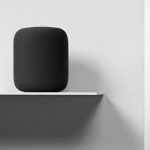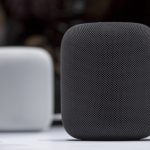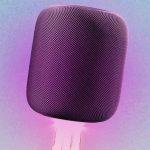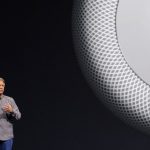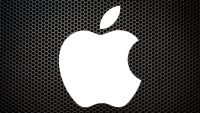Why Apple HomeKit Seems Boring Right Now
HomeKit could become the quintessential product of Tim Cook’s Apple, but right now it’s kind of dull.
Apple has yet to tell much of a story around HomeKit since announcing the smart home framework in mid-2014, and there was little fanfare when the first HomeKit-enabled devices, such as the Ecobee3 thermostat and iHome iSP5 SmartPlug, rolled out last year. At Apple’s WWDC conference in June, the big news around HomeKit was that the company would release a remote control app for smart door locks, lighting, and thermostats, similar to third-party apps that are already available. This is not the type of dramatic product launch for which Steve Jobs was famous.
But maybe it doesn’t have to be. Apple is becoming a different kind of company now, one with a burgeoning interest in ever-evolving services. While the persistent iteration that led to the iPhone and other breakthroughs is still present, it’s no longer happening behind the scenes. Ambitious connected services like HomeKit, Apple Pay, and HealthKit all involve lots of partners operating at scale, which means they must develop out in the open.
These services have the potential to evolve into lucrative businesses for Apple. But in the meantime, the process is going to seem a bit bland.
Faith In The Track Record
I spoke to several smart home device makers for this story, and all of them seem satisfied to be working with Apple on HomeKit. At the same time, they’re short on examples of how HomeKit will push smart home adoption into the mainstream. Most acknowledge that while smart home devices are a growing business, they’re still the domain of either tech enthusiasts or home fixer-uppers.
“So far, nobody has crossed into the masses yet,” says Matt Swatsky, director of product management for smart dimmer maker Lutron. “Apple has historically figured out how to take products and get them to the masses … They haven’t done it yet.”
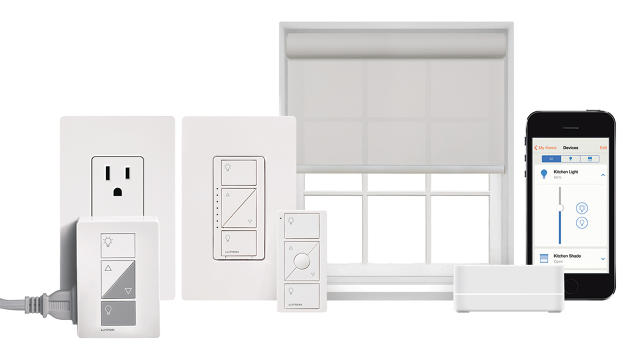
So what drew device makers to HomeKit in the first place? Mostly a belief that Apple’s success in this area is inevitable.
“Clearly, the ability to work with a leader like Apple, you have to assume that those in the Apple ecosphere are very passionate about their products and devices,” says Gary Schultz, who heads product development for iHome’s SmartHome line. “It just makes sense that Apple and HomeKit are going to be leading platforms for the future smart home as it evolves, so it was a win-win.”
A similar line emerged from Schlage, whose smart door locks were among the first HomeKit devices. The main attraction was Apple’s demonstrated knack for intuitive products, says Rob Martens, Schlage’s futurist and director of connectivity platforms.
“You could name any number of experiences they’ve provided, even buying an iPhone … that end-to-end experience that they’ve provided gives what I would call adult businesses, adult manufacturers such as ourselves, a lot of confidence that they’re going to do it properly,” Martens says, referring to Schlage’s decades of experience in the lock-making trade.
Of course, it helps that Apple sells a lot of iPhones. Because the its hardware is so prevalent, the company can start assembling a smart home platform even without an anchor product, akin to Amazon’s Echo speaker or Google’s OnHub router.
“They have a different approach than others. Starting with a device that a lot of people have is not a bad way to get people interested in that connected home experience. There’s not really an up-front purchase to get started,” Lutron’s Matt Swatsky says.
That’s not to say smart home makers aren’t at all interested in HomeKit’s unique traits. Schlage’s Martens praised Apple’s work on creating a secure platform—device makers must include a custom chip for secure communications among devices—and the company’s steps to minimize data collection.
“They have put some stakes in the ground in terms of what they believe are the right things to do and the wrong things to do, and we believe consumers are paying attention and are very interested,” Martens says.
More broadly, the HomeKit framework is easy for device makers to work with in terms of talking to other devices in the home and helping users get set up, says Stuart Lombard, CEO of smart thermostat maker Ecobee.
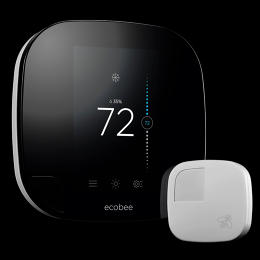
“I think Apple has done a really good job of enabling people like us to create services on top of that platform. They’ll deliver services, we’ll deliver services, and in the end consumers will win.”
If there’s a common thread here, it’s that Apple is doing a lot of thankless work around HomeKit right now, from rallying device makers to building a system around privacy and security. But with products like the iPhone and iPad, this work happened quietly in Cupertino, long before Steve Jobs brought the end result on stage. Now we’re witnessing the construction in real time.
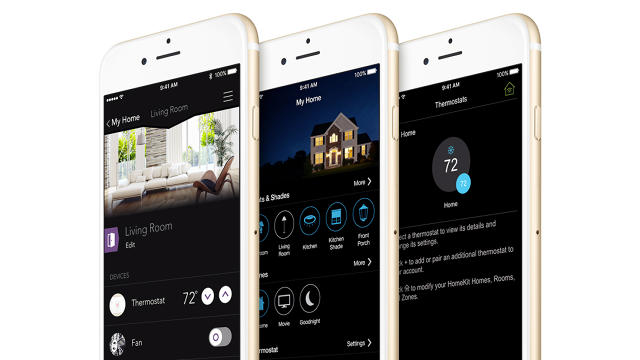
Where HomeKit Goes From Here
So here’s the challenge for Apple: How does HomeKit get from a bare-bones product that appeals to a tiny (but growing) fraction of its customer base to something that’s part of every iPhone owner’s home? In other words, how does it stop being boring?
One argument goes that such a transformation won’t be necessary, and that HomeKit will grow gradually as people replace failing dumb appliances with brand-new smart ones.
“As you go to homes, you see people talking to their homes, you see things in the home responding,” iHome’s Gary Schultz says. “Word of mouth begets any technology, and really, we’re only 12 months into this journey.”
Ecobee’s Stuart Lombard says adoption is already moving from early followers to mainstream users, noting that 40% of new thermostat purchases are Wi-Fi-connected models. Smart homes aren’t just the domain of wealthy people anymore; Ecobee customers have a median household income of $75,000, Lombard says, and more of those customers connect to HomeKit than to any other platform.
“It is not a rich and famous kind of product,” Lombard says.
Still, smart home makers expect Apple to do more over time to push HomeKit forward. The upcoming Home app is the first step, allowing users to control appliances and set up automation routines from one place, and device makers are banking on Apple making that app more intelligent.
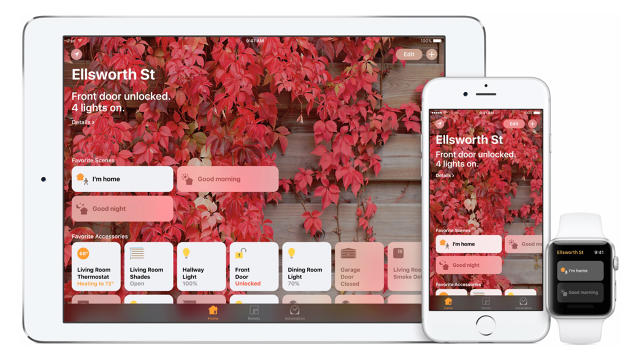
Lombard, for instance, envisions a system that automatically recognizes when you’re on vacation, and rotates through lighting to look like someone’s still home. It’s worth noting that Nest has offered these kinds of advanced home and away automations for a couple years now, but Apple is building a broader framework that works with entire device categories instead of specific partners.
“Those types of use cases, where you solve customer pain points and make it easy for them, those are ones that work really, really well.”
Schlage’s Rob Martens also hopes HomeKit will learn to recognize when not to trigger certain actions. For example, if a motion sensor is set up to turn on the lights and play NPR on the speakers when the user gets home from work, that action should get bypassed if someone else is home already.
“It’s definitely not a play for just the ‘good night Siri’ thing, in terms of making sure the door is locked, making sure the temperature is where I want it, et cetera,” Martens says. “There’s a heightened level of integration.”
But as Martens notes, designing that system requires deep understanding of what each device can do. If a smart lock can tell the difference between someone knocking on the door and trying to kick it in, for instance, HomeKit should know how to communicate that.
“Building your solutions off of an incredibly solid foundation allows you to innovate at a much faster pace later,” he says.
Those who are following the process of building up that foundation via HomeKit may find it dull, but that’s how innovation tends to work.
Would Apple’s partners like to see the company’s marketing muscle kick in sooner? Perhaps, but they also realize that’s not going to happen until the product feels complete. Only then can Apple perform its usual routine, and explain why HomeKit is something people didn’t realize they needed.
“Before they put their weight behind it,” Lombard says, “they really want to make sure they’ve got it right.”
Read more stories from inside Tim Cook’s Apple:
- Playing The Long Game Inside Tim Cook’s Apple
- 9 Ways Tim Cook Has Transformed Apple
- Apple Music’s Bozoma Saint John: It’s About Passion, Not Algorithms
- Tim Cook On Apple’s Values, Mistakes, And Seeing Around Corners
- Why Cory Doctorow Thinks Apple’s Disappearing Headphone Jack Should Scare You
- The iPhone 7 Is Coming: Here’s Everything We’ve Heard So Far
- What I Learned Working With Jony Ive’s Team On The Apple Watch
- Four Reasons Why Betting Against Apple Is A Fool’s Game
- The Apple Watch 2: Everything We Know So Far
Fast Company , Read Full Story
(27)



